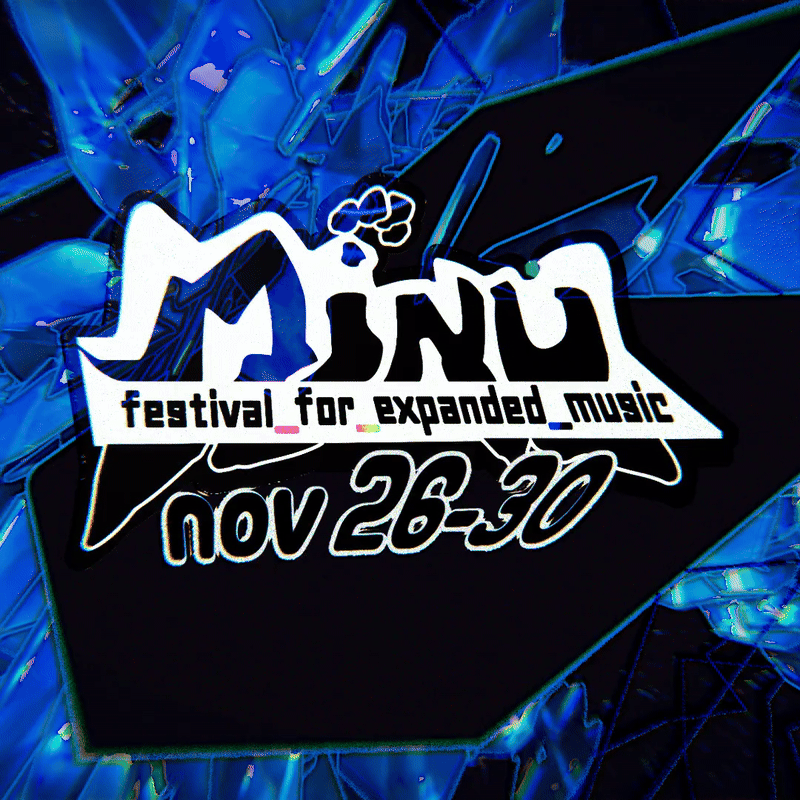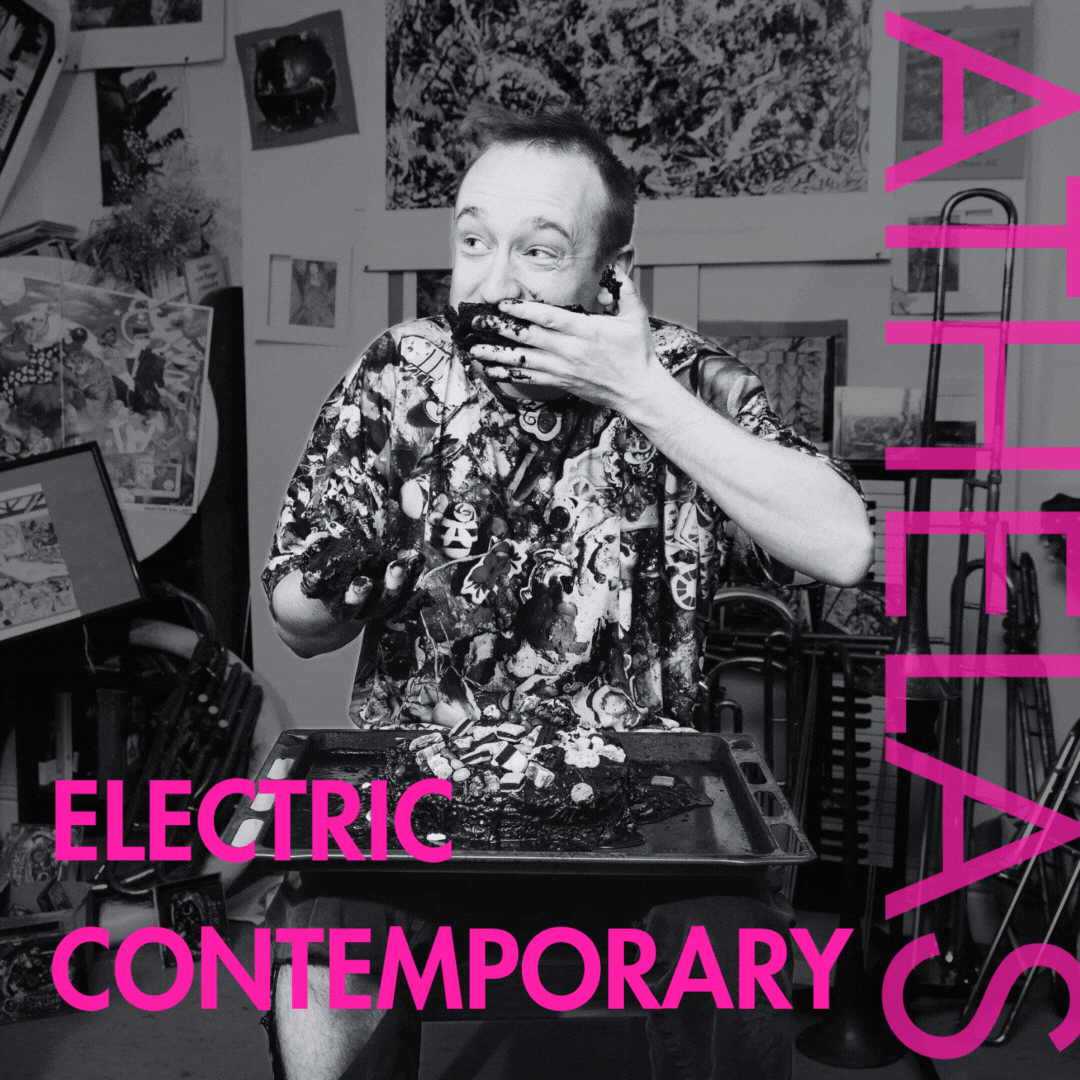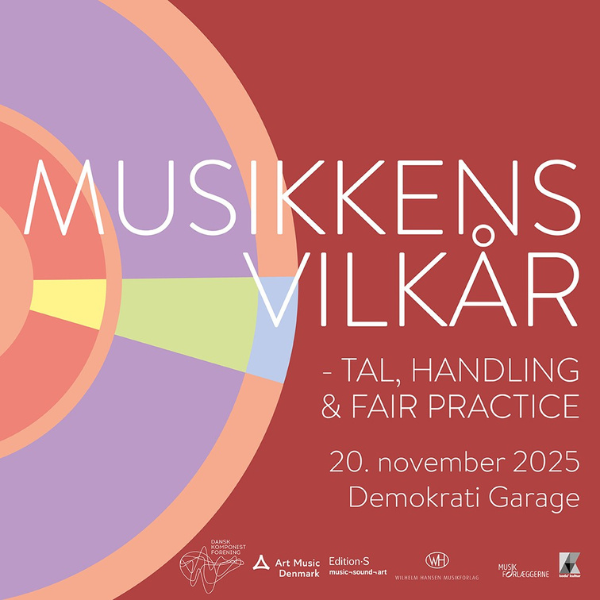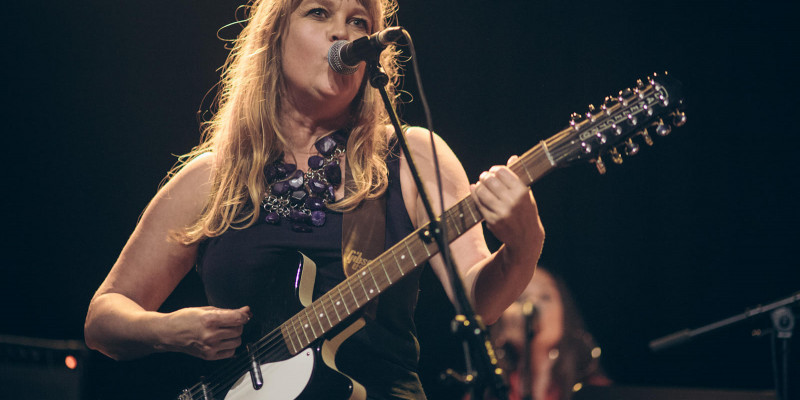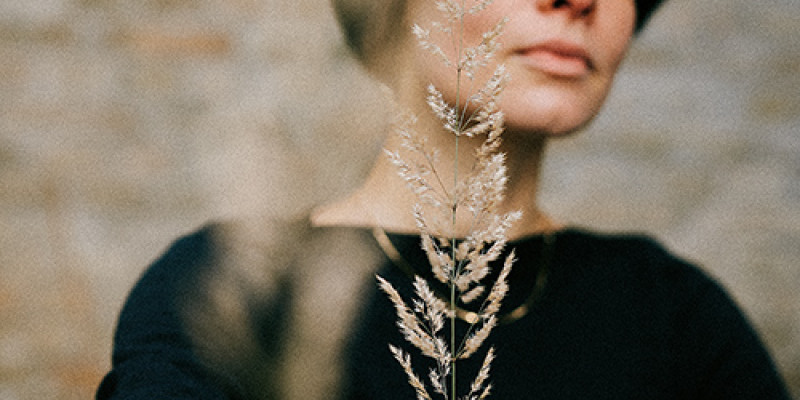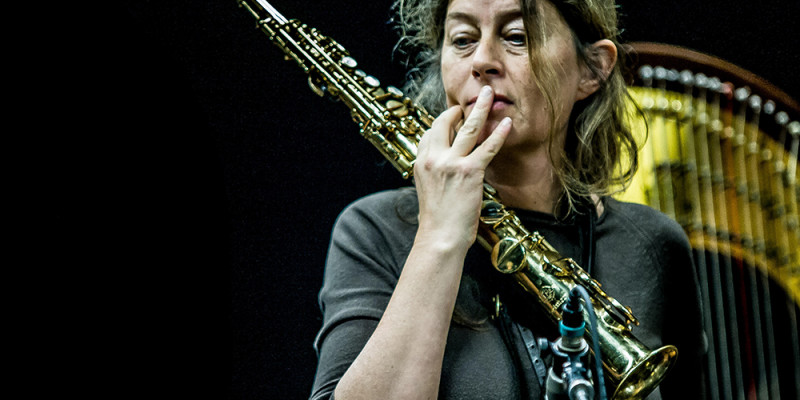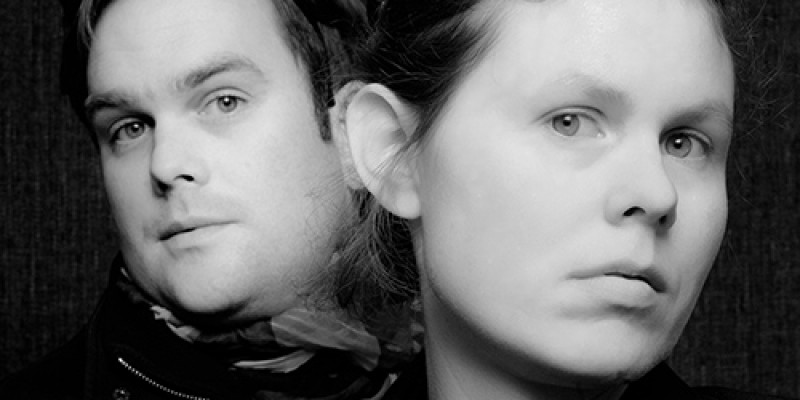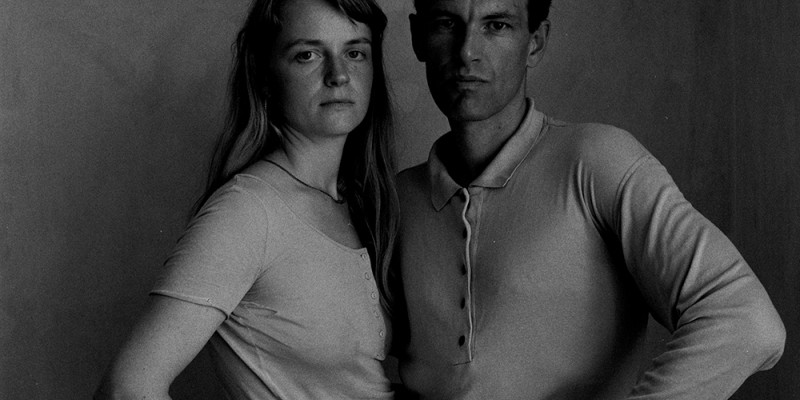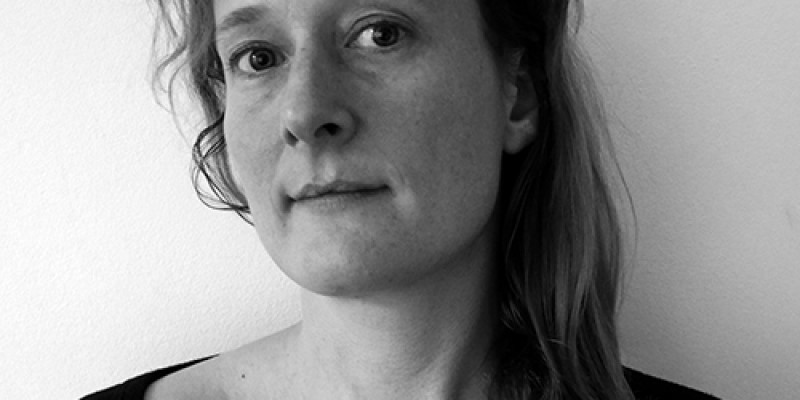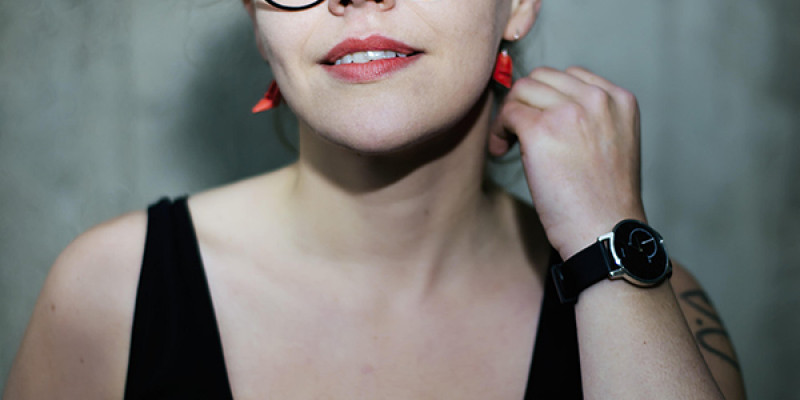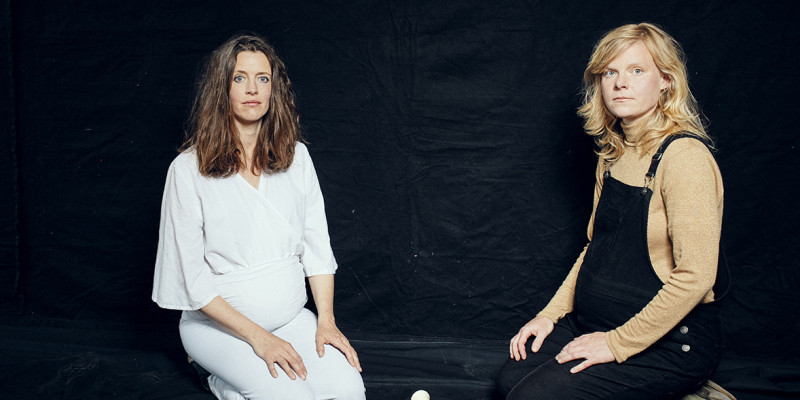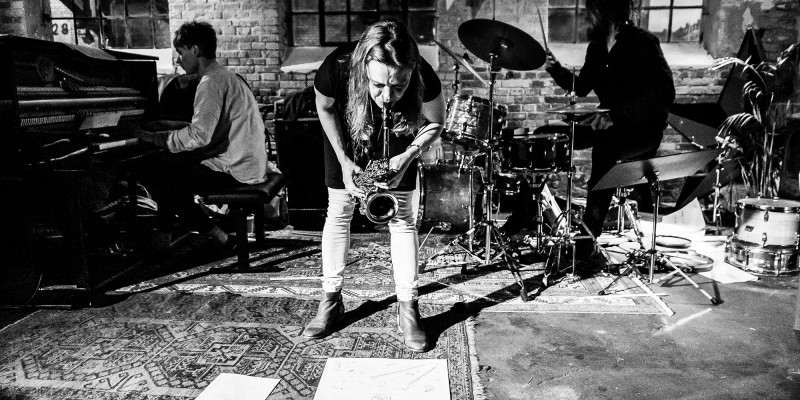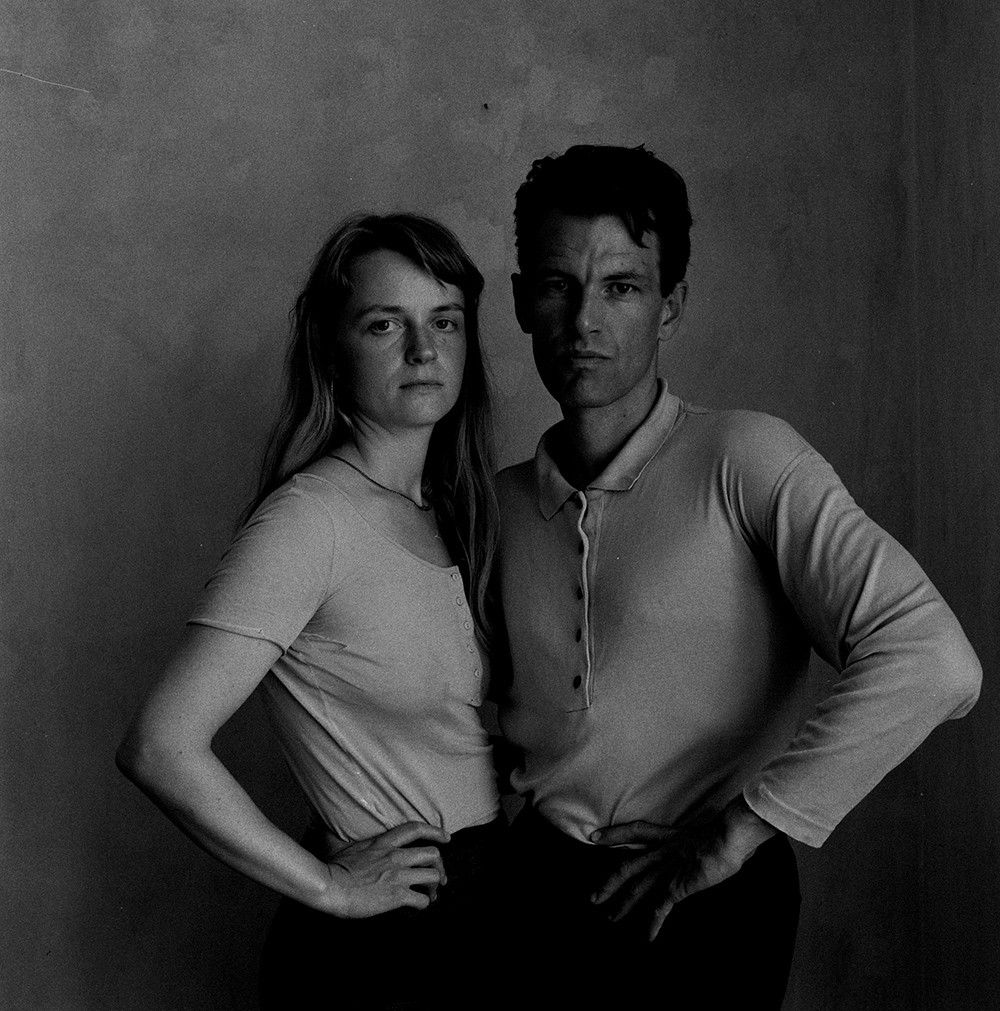
»Go with the spontaneous ideas«
The collaboration as DEAP started during a joint residency at Andersabo in Sweden, where we worked on a soundtrack for a short film. We have made music together before under a different name, but this felt like a new chapter – so the name was more a common name for everyone in our family, who in a way was part of the group, whether they / we wanted it or not.
Our collaboration on DEAP's first release, Musik i en tid (Music for a Time), has been artistically exploratory, but also practically demanding on several levels, including because our children have been a big part of the project. When we started, Pernille had recently given birth to our second child, and we worked at intervals between breastfeedings. The fashion she was in at the time was influenced by the birth, both physically because her body was still hormonally changeable and characterized by a hard birth, but also creatively, as the birth had been a kind of spiritual experience for both of us. It definitely rubbed off on what we thought was exciting to explore in the music and what we considered possible in general.
»There is a magnet connected to the ground. The super magnet can suck all people tight«
Postman Per and zoom recorder
The family feeling was strengthened, and we were inspired by the children's way of perceiving the world and took it into the processes. For example, the poem that Pernille has recited on the record was written down in the car on the way home from Sweden, where our oldest child sat and looked out the window and spoke to himself: »The earth is connected to the sun, just as the nose is connected to the mouth. There is a red path from the lava to the yellow straw. There is a magnet connected to the ground. The super magnet can suck all people tight.« Etc.
It's literally what she said, and of course we felt a little wild about it, also because it spoke to the slightly grandiose feeling one can have when one has brought a new human being into the world. (We have since found out that there is an episode of Postman Per which is about a super magnet). Elsewhere, Pernille picks up a woodpecker chopping in a rotten tree trunk while you can hear sounds from the little one in the sling. In Tvindmøllen we have recorded our daughter running around and her steps resounding and resonating. We have secretly recorded her while she sings and plays the step organ, which is also included. And so it is all the way through the record, which also includes others, both new acquaintances, family and children who were around us during the period. The kids were probably not that aware of what was going on, so it's not like they've had to perform in a certain direction – it was more about having a zoom recorder nearby.
Having an infant and a five-year-old around him all the time in such a process probably required a kind of overachievement in between, because there is like never any rest time for either body or mind. Breastfeeding in itself is a full-time job, and then comes everything else that it entails to have a baby and an older child, on top of an intense musical and artistic joint process. Everything is completely muddy together, but the advantage is that we do not have to talk so much about the decisions, because in a way we have become a unified organism. So you could say that being a parent is quite important in our joint artistic work.
In our individual work we have a rather different approach; Pernille is a full-time art historian and uses it to create music as a kind of oxygenation of her brain. She has a spontaneous and playful approach to music programs, machines and instruments, and approaches them carefree, which often leaves a very special effortless gleam over her music. She often goes with her first instinct or idea and does not rethink things. Aske has a more systematic approach and has worked with music and composition on a daily basis for many years. He can spend a long time finding the right harmonies and in recent years has worked with compositional systems that release the composition process and can redirect the movements and structure of the music. So we are actually very different, but the improvisational approach we meet quite well around, and our individual interests and strengths/weaknesses compliment each other well for the most part.
It might seem, here in writing, like quite gender stereotypical differences to the approach – the spontaneous and immediate / unpredictable / unbridled creativity vs. the structured / factual / sober and experiential. Of course, it is more nuanced than that, and you are rarely just one or the other. But in our collaboration, we each know what works best and is most effective, and therefore we may stick a little to our individual strengths – but we also challenge and push each other, so it is not only safe.
Music for a while
Musik i en tid contains both planned pieces of music noted for instruments in high-quality recordings, but also a lot of sound recorded on mobile phones and zoom recorders that have been less staged. On other parts of the plate, midi sketches have been used instead of the recorded pieces. We wanted to find a special atmosphere or space that we found inside ourselves and around us during that period, and we came to that through a number of different approaches. It has not been so important how we arrived at it, and we ended up with a lot of very versatile material, which we then sorted in and got condensed to the final result. The general thing is that we have strived to preserve or enhance the intimacy of the original recordings.
Go with spontaneous ideas (also the children's), whims and coincidences
Aske's experience from many years of work with composition, editing and production has led to a fairly clean process from idea to finished product, because we have been able to control all parts ourselves. The strengths we each have, plus the fact that we have known each other for almost half of our lives, make the collaboration go reasonably smoothly, and we trust each other's judgment. It has not taken a lot of time to go in one direction, only to find that it did not work. Sometimes maybe it can be a good thing to be pressed by time – you can actually save some!
Our common physical working conditions are very changing and tied up in the fact that we both have children together and live together. The fact that we live together, in principle, means that we can work at all times, but the children mean that we either have to incorporate them, or wait until they are asleep or busy with something else. The time we have to work together creatively is therefore incoherent, unpredictable and often with imminent danger of being interrupted. It is difficult to immerse oneself and plan processes, and therefore we chose with Musik i en tid to use what we had around us – go with spontaneous ideas (also the children's), whims and coincidences, combined with more planned recordings, as so often meant that one had to look after children in the meantime.
English translation: Andreo Michaelo Mielczarek
